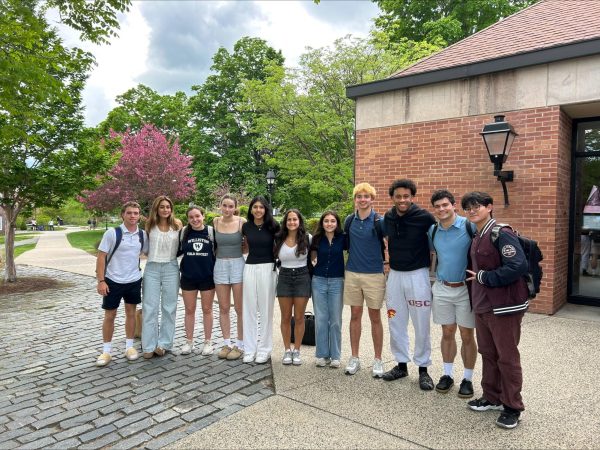Government Makes U.S. Citizenship Test More Difficult
The Trump administration just made it harder to become an American citizen. On December 1, the Trump Administration made the U.S. citizenship test longer and more complex.
For those applying to become U.S. citizens, passing the citizenship test is a requirement. The test was officially introduced in 1986 to evaluate applicants’ knowledge of U.S. history and government; it was last revised in 2008.
Passing the previous exam required correctly answering six out of ten questions randomly selected from a pool of 100. The new test is longer, consisting of 20 questions randomly selected from a pool of 128; it has the same passing score of 60% (12 out of 20 correct).
Although the passing score is the same, the new test is more difficult, according to Simon Romero in a New York Times article.
He writes that the new test is “more complex, eliminating simple geography and adding dozens of possible questions, some nuanced and involving complex phrasing, that could trip up applicants who do not consider them carefully.”
Michael Doubleday, a history teacher at Williston, believes that the new test is more unforgiving for those still learning English.
“I think a citizenship test is a reasonable requirement, but it seems this particular test is designed to present challenges for people who may not be very proficient in English,” he said.
The decision to make the test more difficult is questionable since most American citizens fail to pass the test. A survey released on October 3, 2018, by the Woodrow Wilson National Fellowship Foundation, showed that only 36% of a sample of 1,000 American adults passed the test.
A flaw of the citizenship test is its revision process. Peter Gunn, a history teacher at Williston, believes that certain changes made to the test were policy-driven rather than to improve its quality. The new answer to the question “Who does a U.S. Senator represent?” is one of these changes.
“The correct answer should be that they represent the people who live in your district, but the correct answer in the new test is ‘the citizens,’” he explained. “The text in the Constitution says, ‘the people.’ I think it is a political statement by the President and his administration because they want to bar non-citizens from the census … This is an example of a policy-driven change.”
Because of changes made to the test, Gunn is concerned about the current process in place for revising the test.
“I think there are a lot of Americans that would object to the question about representation in Congress because it seems to be more about politics and less about understanding the political system. Reasonable people could say both “the people” and “the citizens.” So who gets to decide which one is correct? Whoever is in power? That doesn’t seem like a good way to get to the truth.”
Doubleday believes that allowing more people to participate in the test’s revision process will fix some of its flaws.
“I think the process needs to include representatives from all the stakeholder groups so that the process of creating a new test is fair and serves its intended purpose,” he said.
Although Doubleday is concerned by the changes, he is confident in naturalization applicants’ capability to pass the new test.
“I think that most people going through the process of becoming a U.S. citizen are hardworking, ambitious people that are going to adjust and do what is necessary to fulfill their dream of becoming U.S. citizens,” he said. I also think the people and agencies that work to assist in the process will adapt their methods to address whatever changes to the test are made.”
Kohmei Kadoya, class of ’19, told The Willistonian that he thinks most Williston students who choose to apply for U.S. citizenship would barely be affected by the recent changes made to the test.
“Although I am opposed to making the test more difficult, these changes won’t really affect my performance on the test, and I think I can say the same about most Williston students,” he said. “The people affected most by the changes are those without reliable access to the resources necessary to prepare for the test. For the rest, it’s essentially the same test but longer.”












